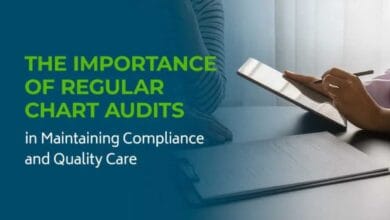How to Become a Pharmacy Tech Step-by-Step in 2025

In today’s quickly expanding job market, choosing a career in healthcare is a smart choice, but not everyone wants to spend four to eight years in school. A career as a pharmacy technician might be just what you’re looking for if you want to enter the medical industry more quickly. Pharmacy technicians help licensed pharmacists prepare and dispense medications, manage inventory, and engage with patients. They are crucial in both retail and clinical settings.
However, in 2025, what are the prerequisites for entering this field?
Here is a step-by-step, straightforward, and comprehensive guide on how to become a pharmacy tech in 2025, regardless of whether you’re a recent high school graduate or thinking about changing careers in your midlife.
Pharmacy Technician Career at a Glance in 2025

Understanding the landscape of this profession is helpful before we begin the steps. Due to rising demand and a shortage of pharmacists, pharmacy technicians are being given more responsibilities as their role rapidly changes.
Here’s a quick rundown of what to anticipate:
| Category | Information (2025) |
| Job Outlook | Projected 5–7% growth by 2030 |
| National Median Salary | $40,150 per year |
| Required Education | High school diploma + certificate/training |
| Certification Options | PTCB (CPhT), NHA (ExCPT) |
| Typical Training Length | 6 months to 1 year |
| Work Environments | Retail pharmacies, hospitals, and clinics |
| Advancement Potential | High — compounding, supervisor, pharmacist |
It’s no surprise that this field is becoming more and more popular, given its high job stability and short training period.
Estimated Timeline and Path to Certification
Let’s now examine the typical time required to become a pharmacy technician. Although state-specific timelines and individual schedules differ, the following is a general outline of what your journey might entail:
| Step | Estimated Time |
| Complete High School or GED | Already required |
| Enroll in a Pharmacy Tech Program | 4–12 months |
| Prepare and Take Certification Exam | 1–3 months |
| Apply for State License (if needed) | 1–2 months |
| Find Entry-Level Employment | 1–3 months |
Therefore, the majority of people can become fully trained, certified, and employed in the field in around a year.
Meet the Basic Requirements
You need to fulfill a few basic yet crucial requirements before you can start:
- Be at least eighteen years old.
- possess a GED or high school diploma.
- Clear a criminal background check, which is necessary in the majority of states.
- Be at ease working in hectic settings while paying close attention to details.
You might be asked to submit to a drug test, have your fingerprints taken, or show proof of U.S. residency in some states.
Sign Up for a Training Program for Pharmacy Technicians

This is the most crucial step in your journey. Pharmacy tech programs are more accessible and adaptable than ever in 2025. Community colleges, technical schools, and authorized online training providers are among your options. Numerous programs provide both in-person externships and online coursework.
Typical core subjects are:
- Ethics and pharmacy law
- Classifications of drugs and dosage forms
- Basics of pharmacology
- Terms used in medicine
- Management of inventories
- Experiential lab simulations or internships
Selecting an ASHP/ACPE-accredited program guarantees eligibility for national certification exams and may be mandated by certain employers.
Pass a National Certification Exam (PTCB or NHA)
Although it is not always necessary, certification is highly encouraged and mandated in many states. There are two primary choices:
- CPhT certification is granted by the PTCB (Pharmacy Technician Certification Board).
- The National Healthcareer Association (NHA) administers the ExCPT exam.
Some states require you to pass one in order to be licensed, and most employers prefer one over the other. Federal laws, safety protocols, medication interactions, and dosage calculations are among the topics covered in both tests.
Depending on your background, studying for these tests typically takes one to three months. Practice tests and exam preparation materials are a common feature of training programs.
Apply for State Licensing or Registration
A pharmacy technician license is required in many states in the United States, but not all of them do. There is a wide range of requirements; some only require certification, while others require proof of continuing education, a background check, and a license application.
To confirm, visit your state’s Board of Pharmacy’s website:
- requirements for registration or licensing
- Documents and forms that are necessary
- Any further training tailored to a particular state
- Fees or periods for renewal
Obtaining certification offers you a significant advantage in the job market, even in states where licensing is not required.
Gain Hands-On Experience Through Externship or Work
Most programs include an internship at a hospital or retail pharmacy during or after your formal training. This boosts your confidence, provides practical experience, and looks fantastic on your CV.
Seek out entry-level positions or internships that provide on-the-job training if your program doesn’t offer one. These are frequently paid jobs that have the potential to become full-time, permanent positions.
Start Applying for Jobs and Building a Career
It’s time to start working after obtaining any necessary certifications and licenses. Rite Aid, CVS, Walgreens, and other retail chains need pharmacy technicians.
- Urgent care centers and hospital pharmacies
- Facilities for long-term care
- Mail-order or specialty pharmacies
- VA or military healthcare systems
Make sure your certification, practical experience, and dependability are highlighted on your resume. After hiring you, a lot of companies will give you more training.
Advance Your Career (Optional But Encouraged)

A career as a pharmacy tech is not a dead-end position. You can specialize in or progress through a variety of career paths:
- A compounding technician mixes prescription drugs.
- Lead Tech or Pharmacy Tech II: Oversees others
- Inventory Specialist: Oversees the supply of drugs
- Hospital cleanrooms employ sterile IV technicians.
- Make the move to pharmacy school by leveraging your prior experience.
Some skilled technicians even pursue careers in healthcare administration, nursing, or medical billing.
Final Thoughts
You now understand the precise steps involved in becoming a pharmacy tech in 2025, from fulfilling the prerequisites to obtaining certification and a license to beginning your career. The job market is stable, the process is comparatively quick, and there are plenty of opportunities for advancement.
Pharmacy technology offers a useful, lucrative route into healthcare, regardless of whether you’re just finishing school or looking for a change of pace. Additionally, there will always be a need for your skills in a world where managing medications is more important than ever.
Q&A: Frequently Asked Questions
Q1: Does becoming a pharmacy tech require a college degree?
A: No, all you need is a GED or high school diploma. The majority of pharmacy technicians finish a certificate or diploma program in less than a year.
Q2: Will 2025 see the acceptance of online training?
A: As long as they are accredited and offer practical externship opportunities, online pharmacy tech programs are generally accepted.
Q3: How challenging is the NHA or PTCB exam?
A: With study, it’s doable. Prep classes are very helpful, but many test-takers claim that the math and drug knowledge sections are the most difficult.
Q4: Which states have licensing requirements for pharmacy technicians?
A: Although the requirements differ, the majority of states do. Each state has its own licensing procedures, including Florida, Texas, and California.
Q5: What is the price of certification?
A: Depending on your state and school, budget between $1,000 and $2,500 for training, exam fees, and licensing.
Q6: Are you able to work as a pharmacy technician part-time?
A: Definitely. Part-time work is available at many pharmacies, which is perfect for students or those juggling other obligations.
Q7: In this field of work, what is the most challenging aspect?
A: Maintaining speed and accuracy under duress, particularly during peak hours. To prevent medication errors, attention to detail is essential.





One Comment